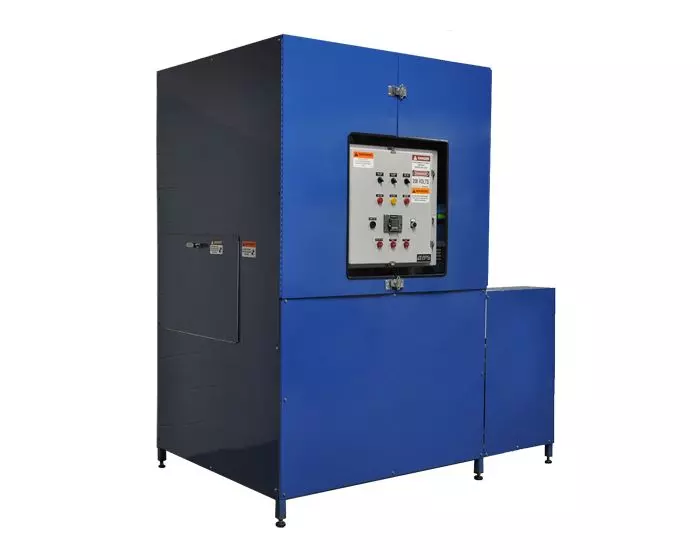We use cookies to make your experience better. To comply with the new e-Privacy directive, we need to ask for your consent to set the cookies. Learn more.
Safe and Responsible Disposal of Forklift Battery Wash Water
There was a time when warehouse managers would just dump a load of baking soda into dirty water from battery washes and pour the whole mess down the drain.
Those days, thankfully, are long-gone. If you haven't evolved on wastewater disposal, you're setting yourself up for a nasty run-in with the EPA. With fines of up to $50,000 per day for violating the Resource Conservation and Recovery Act (RCRA), you definitely don't want to get this one wrong. Besides, water is the lifeblood of our planet, and you'd have to be pretty cold to look the other way while your organization fills the aquifer with all the nasty contaminants found in untreated runoff from washing batteries.
How Washing Forklift Batteries Transforms Wash Water
So what happens during a battery wash to transform pure, clear water into literal hazardous waste? As you spray off your battery cases, the jet of water accumulates fragments of lead, dirt, rust, and other heavy metals. It also picks up a hefty dose of sulphuric acid.
These contaminants meet the RCRA's definition of hazardous waste by reason of toxicity. In this context, "hazardous waste" is a legal designation, not just a descriptive term. It triggers a complex regulatory system, complete with minutely detailed tracking requirements, strict disposal protocols, and, yes, heavy duty punishments for violations.
 Here's what you need to know to properly dispose of the gallons of water you use to clean your batteries.
Here's what you need to know to properly dispose of the gallons of water you use to clean your batteries.
- In order for water to enter municipal sewer systems without causing harm, you have to both remove contaminants and neutralize any acidic content.
- Even if you filter out tiny particles of lead and other heavy metals, you can't simply throw them into the landfill. They'll have to be sealed inside a leach-proof substance that will prevent them from ending up in the groundwater.
- You'll need to test all by-products of the purification process according to specific laboratory procedures before releasing them into the environment. The EPA uses a process called the Toxicity Characteristic Leaching Procedure, or TCLP. You should too.
- If you decide to hire a 3rd-party waste disposal service, you're not necessarily off the hook if any of your hazardous waste ends up polluting water supplies. The RCRA tracks waste from "cradle to grave," and holds the waste generator responsible for the eventual fate of the substance.
In-house Wastewater Treatment for Forklift Battery Wash Water
A single piece of equipment can eliminate all of these hazards, safely — and legally — transforming polluted wash water into clean H2O that's ready for conventional disposal.
It's called a Wastewater Recycling System (WRS). Solus Group is a leading supplier of the WRS, along with other battery wash equipment that conserves water while cutting down on labor and associated costs.
As dirty wash water moves through the WRS, the system automatically filters out every particle deemed hazardous by the RCRA. It seals these pollutants into a block of bentonite clay, which is certified safe for landfills.
The leftover liquid is then treated to neutralize all acid content. When water comes out of the WRS, it's totally safe and legal for conventional disposal. That is, you can simply pour it down the drain. Or, even better, reuse it again and again for the ultimate in water conservation.
The Earth will thank you — and so will your shareholders.
References:
“Hazardous Waste – RCRA Subtitle C.” EPA. U.S. Environmental Protection Agency, n.d. Web. 27 Apr. 2016.
Lagana, Kelly. “7 RCRA Violations That Will Send You to Jail.” envirodailyadvisor. BLR, 3 August 2012. Web. 27 Apr. 2016.
“RCRA Orientation Manual 2014.” EPA. U.S. Environmental Protection Agency, 2014. PDF. 27 Apr. 2016.
